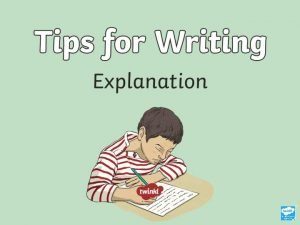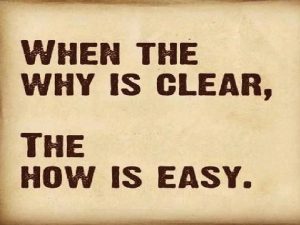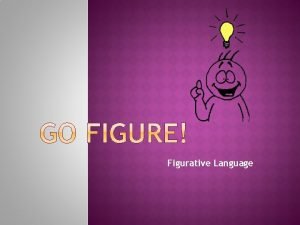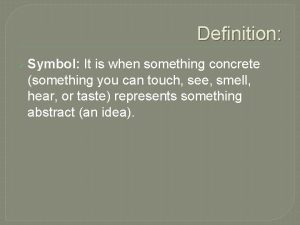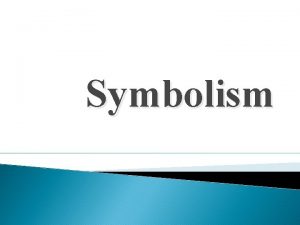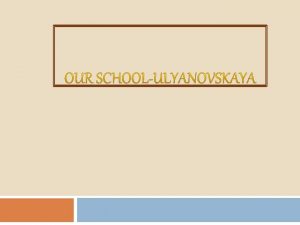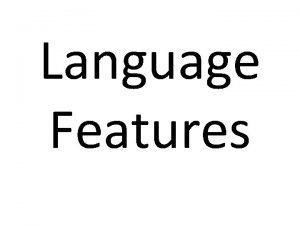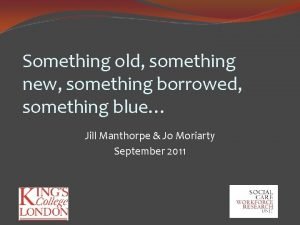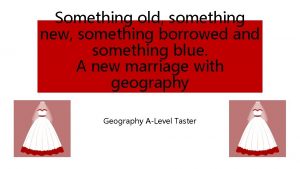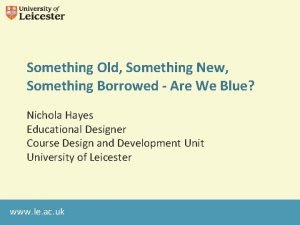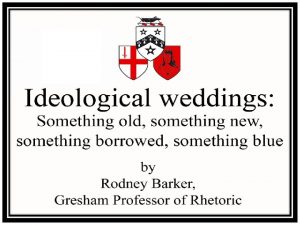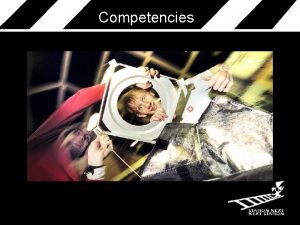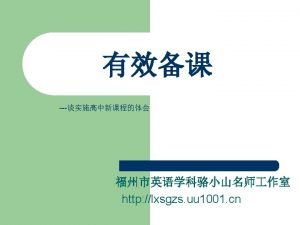Learning Outcomes Learning Outcomes An outcome is something







- Slides: 7

Learning Outcomes

Learning Outcomes An outcome is something that the student must know and be able to do by the end of your session/course/module with them. All outcomes should complete the sentence: By the end of this session/course/module, students should be able to… Need to be aligned with both teaching and assessment task/s.

Why focus on outcomes? ● ● ● defines competencies to be achieved in terms of skills, content mastery, attitudes, or values. forms the basis upon which to select or design instruction materials, content, or techniques i. e. to devise appropriate reflection activities. provides the basis for determining or assessing when the instruction purpose has been accomplished i. e. to develop appropriate assessment techniques. provides a framework within which a learner can organize her/his efforts to complete the learning tasks. Ref: http: //www. thelearningmanager. com/pubdownloads/developing_clear_learning_outcomes_and_obje ctives. pdf

How to develop outcomes ● Audience - what level/ability/etc ● Behaviours -observable verbs ● Conditions - what circumstances ● Degree- how well Given a bar, line, or circle graph, the seventh-grade mathematics students will be able to verbally present all the statistical or numerical information shown on the graph with 100% accuracy. http: //www. slideshare. net/ashleytan/writing-specific-instructionallearningobjectives-presentation

References http: //www. slideshare. net/ashleytan/writing-specific-instructionallearning-objectives-presentation ●http: //www. thelearningmanager. com/pubdownloads/developing_clear_learning_outcomes_and_objectives. pdf http: //www. uwsp. edu/education/lwilson/curric/newtaxonomy. htm ● http: //www. stthomasu. ca/publications/teaching/fall 2003/moore. htmhttp: //www. ucd. ie/teaching/printable. Docs/G ood%20 Practices%20 in%20 T&L/deep%20 surface&stragtic%20 approaches%20 to%20 learning. pdf ● Moll, I. (2010, Forthcoming) Learning and computing: theoretical perspectives on the pedagogic integration of ICTs. In Mc. Cabe, K. & van Wyk, K. (Eds. ). Teaching and e-Learning. Cape Town: Macmillan. (Pre-publication version). ● ● Kilfoil W. R; A Model for learning development. University of Pretoria ● http: //www. ic. arizona. edu/ic/edp 511/isd 1. html ● http: //onceateacher. wordpress. com/2009/01/28/blooms-taxonomy-20/ ● http: //donaldclarkplanb. blogspot. com/2006/09/gagnes-nine-dull-commandments. html ● http: //projects. coe. uga. edu/epltt/index. php? title=Bloom's_Taxonomy#evaluatingreview ● http: //edorigami. wikispaces. com/Bloom's+Digital+Taxonomy ● http: //onceateacher. wordpress. com/2009/01/28/blooms-taxonomy-20/ ● http: //faculty. mwsu. edu/west/maryann. coe/inquire/inquiry. htm ● http: //edutechwiki. unige. ch/en/5 e_Learning_cycle ● http: //digigogy. blogspot. com/2009/02/digital-blooms-visual. html Dabbagh, N. (date retrieved : 2010/07/25). The Instructional Design Knowledge Base. Retrieved month, day, year from Nada Dabbagh's Homepage, George Mason University, Instructional Technology Program. Website: http: //classweb. gmu. edu/ndabbagh/Resources/IDKB/index. htm ●

How to develop outcomes(cont. ) Outcomes = Conditions + Performance + Criteria

Blooms Revised Taxonomy The new terms are defined as: · Retrieving, recognizing, and recalling relevant knowledge from long-term memory. · Understanding: Constructing meaning from oral, written, and graphic messages through interpreting, exemplifying, classifying, summarizing, inferring, comparing, and explaining. · Applying: Carrying out or using a procedure through executing, or implementing. · Analyzing: Breaking material into constituent parts, determining how the parts relate to one another and to an overall structure or purpose through differentiating, organizing, and attributing. · Evaluating: Making judgments based on criteria and standards through checking and critiquing. · Creating: Putting elements together to form a coherent or functional whole; reorganizing elements into a new pattern or structure through generating, planning, or producing. Ref: http: //projects. coe. uga. edu/epltt/index. php? title=Bloom's_Taxonomy
 Something concrete that stands for something abstract
Something concrete that stands for something abstract Tells how something works or why something happens
Tells how something works or why something happens Smart is not something you are
Smart is not something you are Describing something by comparing it to something else
Describing something by comparing it to something else Something concrete that stands for something abstract
Something concrete that stands for something abstract Symbol/symbolism definition
Symbol/symbolism definition Something old something new poem
Something old something new poem Is adjective a language feature
Is adjective a language feature

